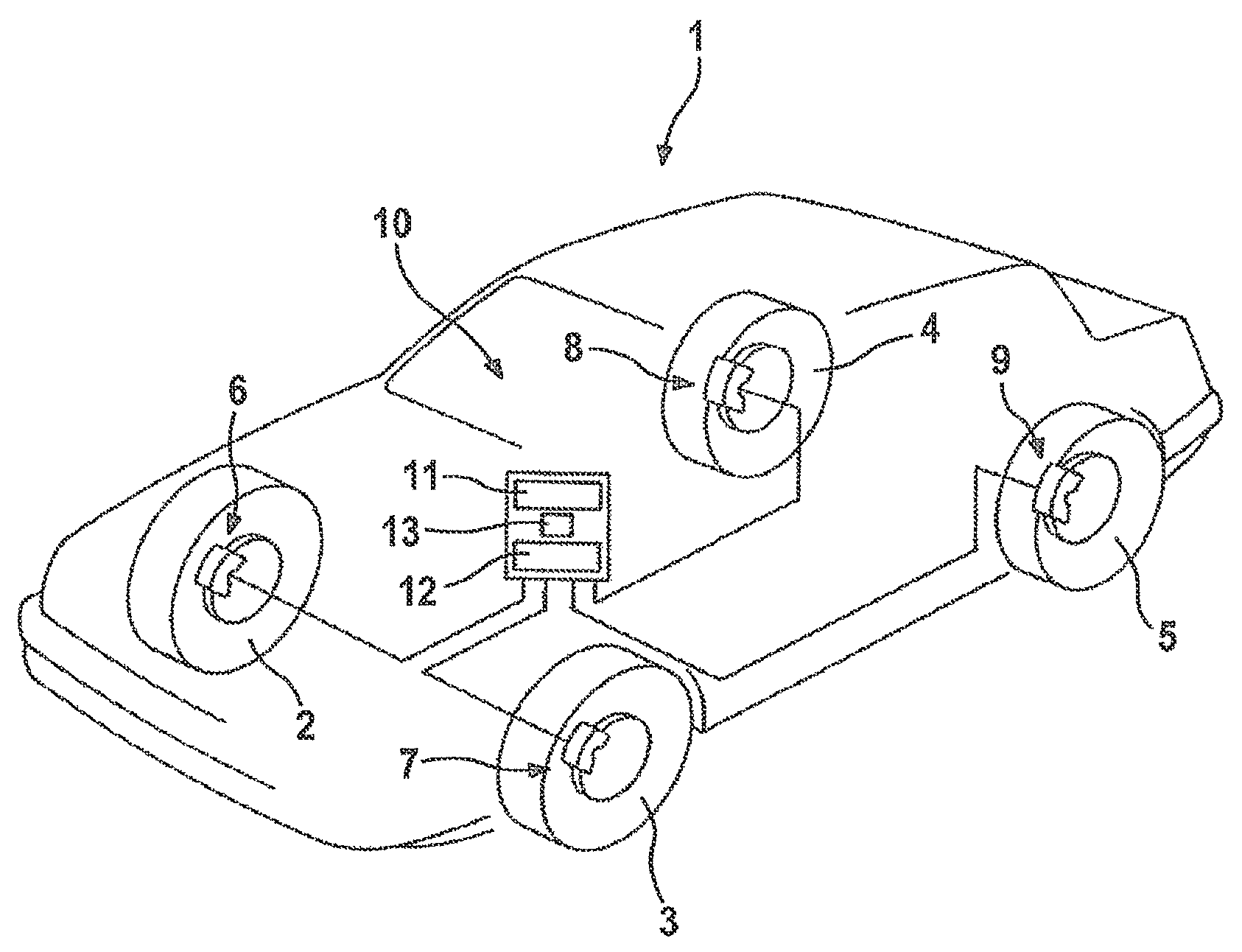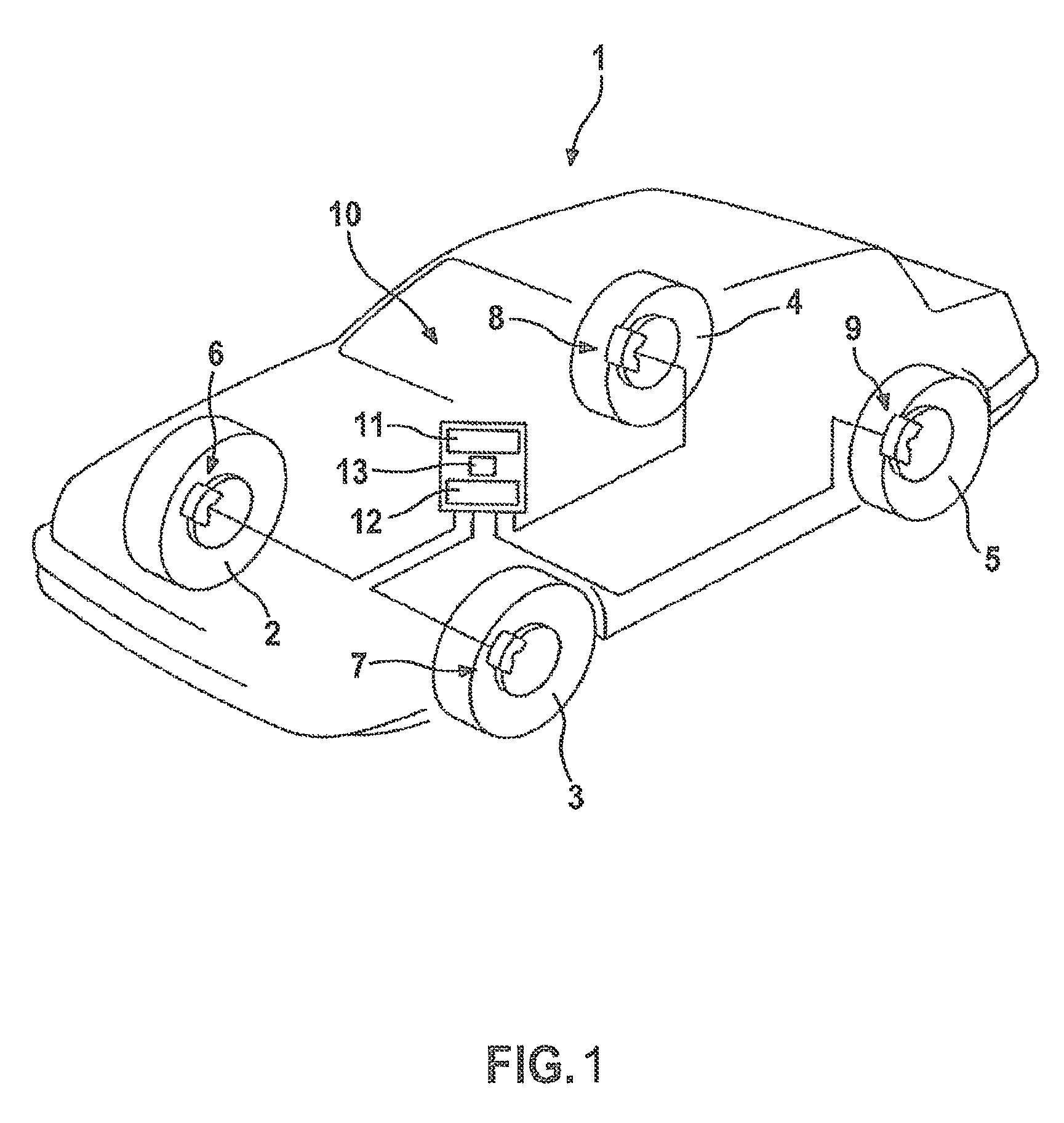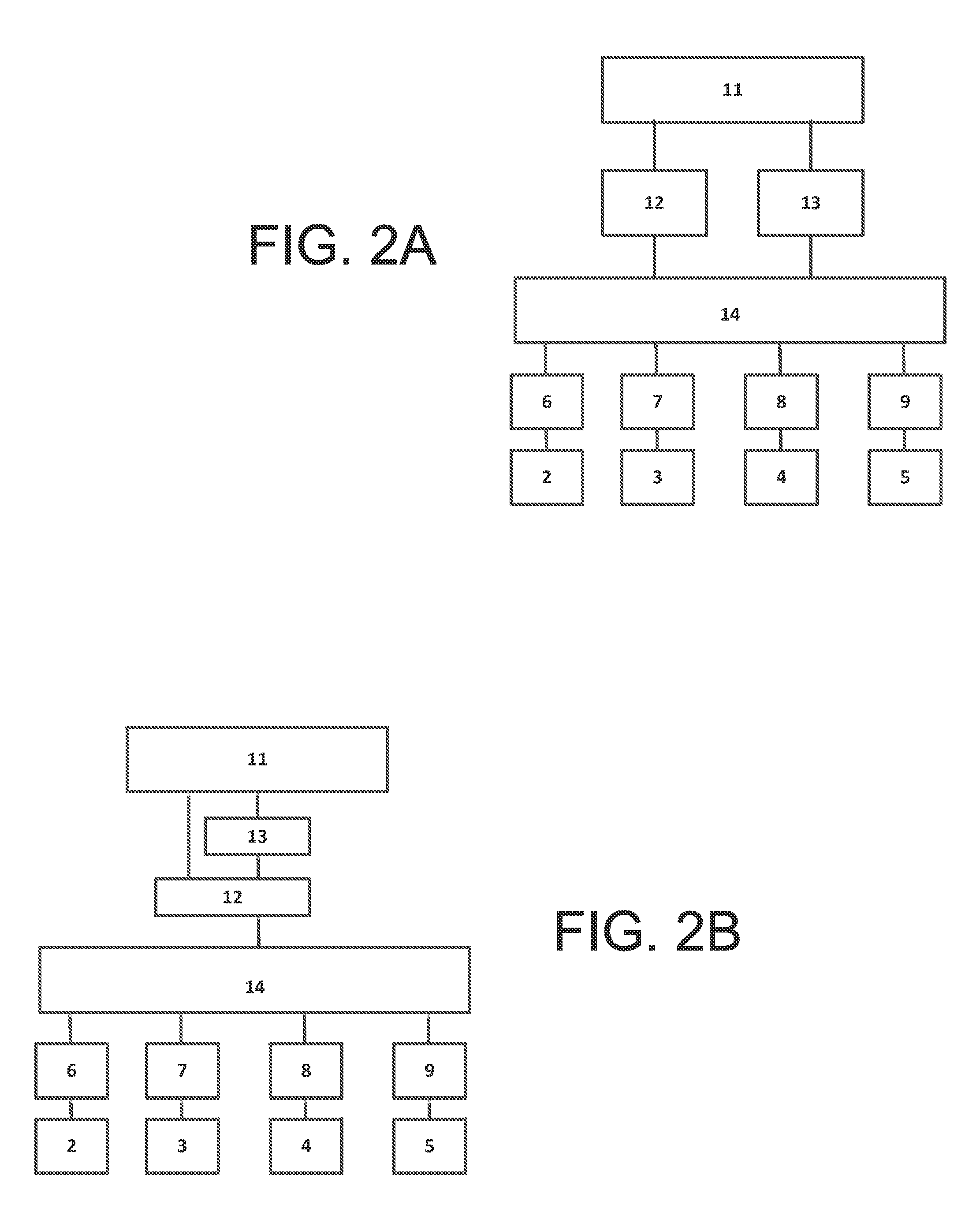Method for operating a brake system of a vehicle, and brake system
a brake system and vehicle technology, applied in the direction of brake systems, vehicle components, braking components, etc., can solve the problems of reduced discharge volume flow, inability to ensure the functioning of the brake system, especially of the abs brake system, and inability to discharge additional brake fluid from the braking device or the braking device, etc., to achieve the effect of reducing the power and reducing the volume flow
- Summary
- Abstract
- Description
- Claims
- Application Information
AI Technical Summary
Benefits of technology
Problems solved by technology
Method used
Image
Examples
Embodiment Construction
[0018]FIG. 1 shows a vehicle 1 having wheels 2, 3, 4 and 5, to each of which a braking device 6, 7, 8 and 9 has been assigned. Braking devices 6, 7, 8 and 9 are components of a brake system 10 of vehicle 1. Braking devices 6 through 9 are each connected to a main brake cylinder 11, an intermediate reservoir 12, and a delivery device 13.
[0019]FIG. 2A and FIG. 2B show alternative embodiments facilitating connections between several components within vehicle 1. Braking devices 6 through 9 are each connected to an intermediate reservoir 12 and a delivery device 13, via a cross-section adjusting member 14. Brake fluid is able to be discharged in a controlled manner from braking devices 6 through 9 via the cross-section adjusting member 14, so as to reduce the braking force exerted on wheels 2 through 5. The brake fluid discharged via cross-section adjusting member 14 in a controlled and / or regulated manner reaches delivery device 13 or intermediate reservoir 12. The volume flow at which ...
PUM
 Login to View More
Login to View More Abstract
Description
Claims
Application Information
 Login to View More
Login to View More - R&D
- Intellectual Property
- Life Sciences
- Materials
- Tech Scout
- Unparalleled Data Quality
- Higher Quality Content
- 60% Fewer Hallucinations
Browse by: Latest US Patents, China's latest patents, Technical Efficacy Thesaurus, Application Domain, Technology Topic, Popular Technical Reports.
© 2025 PatSnap. All rights reserved.Legal|Privacy policy|Modern Slavery Act Transparency Statement|Sitemap|About US| Contact US: help@patsnap.com



